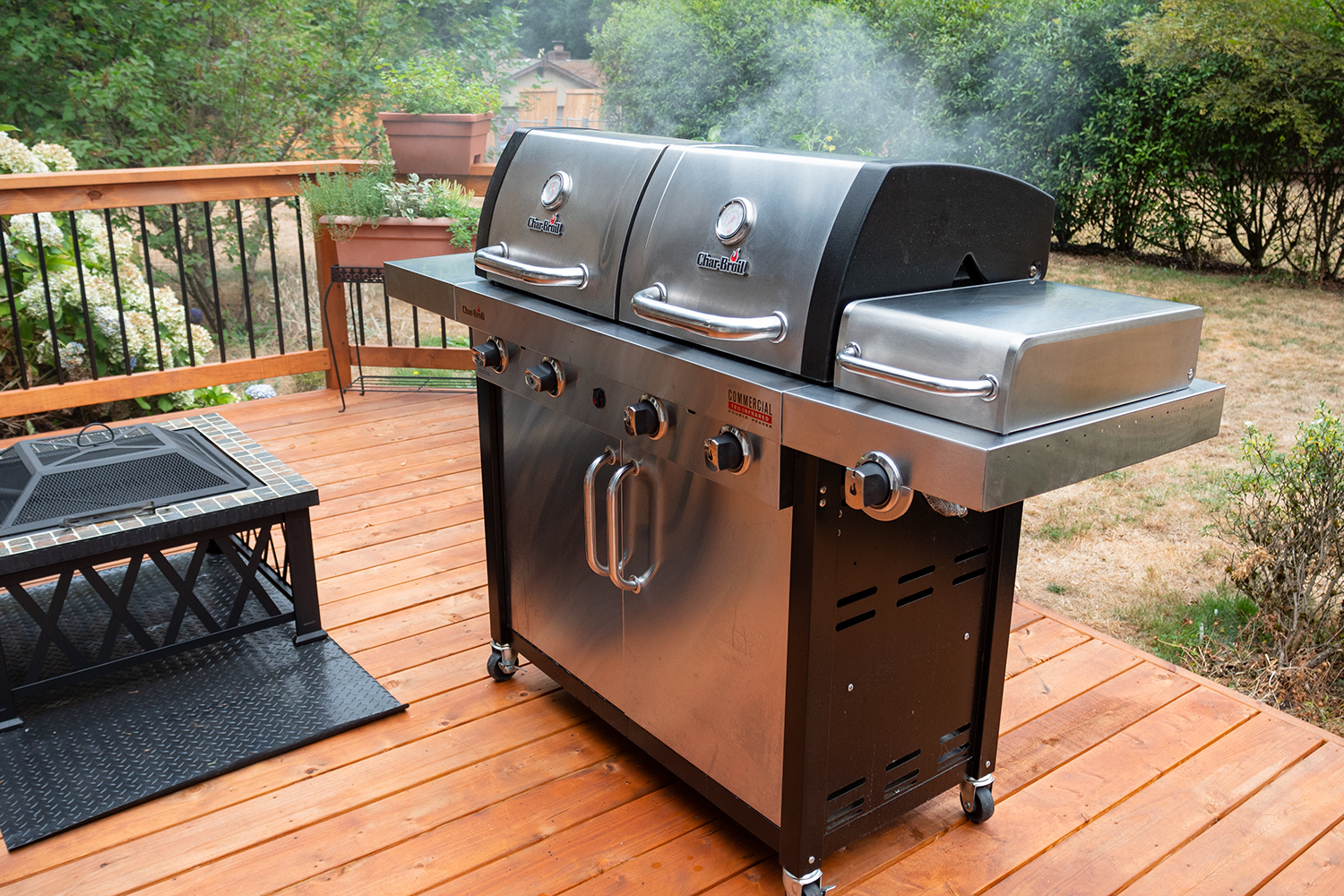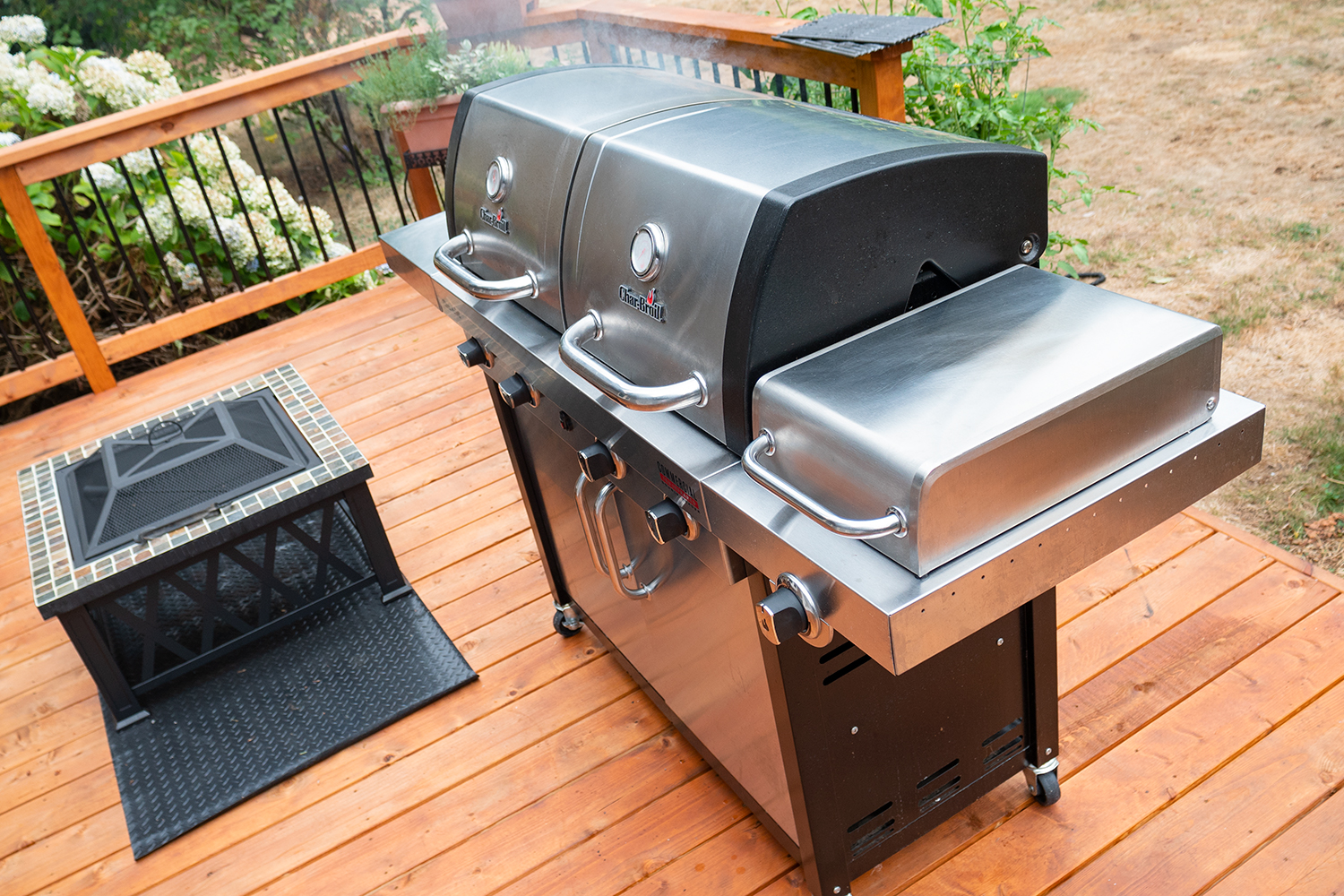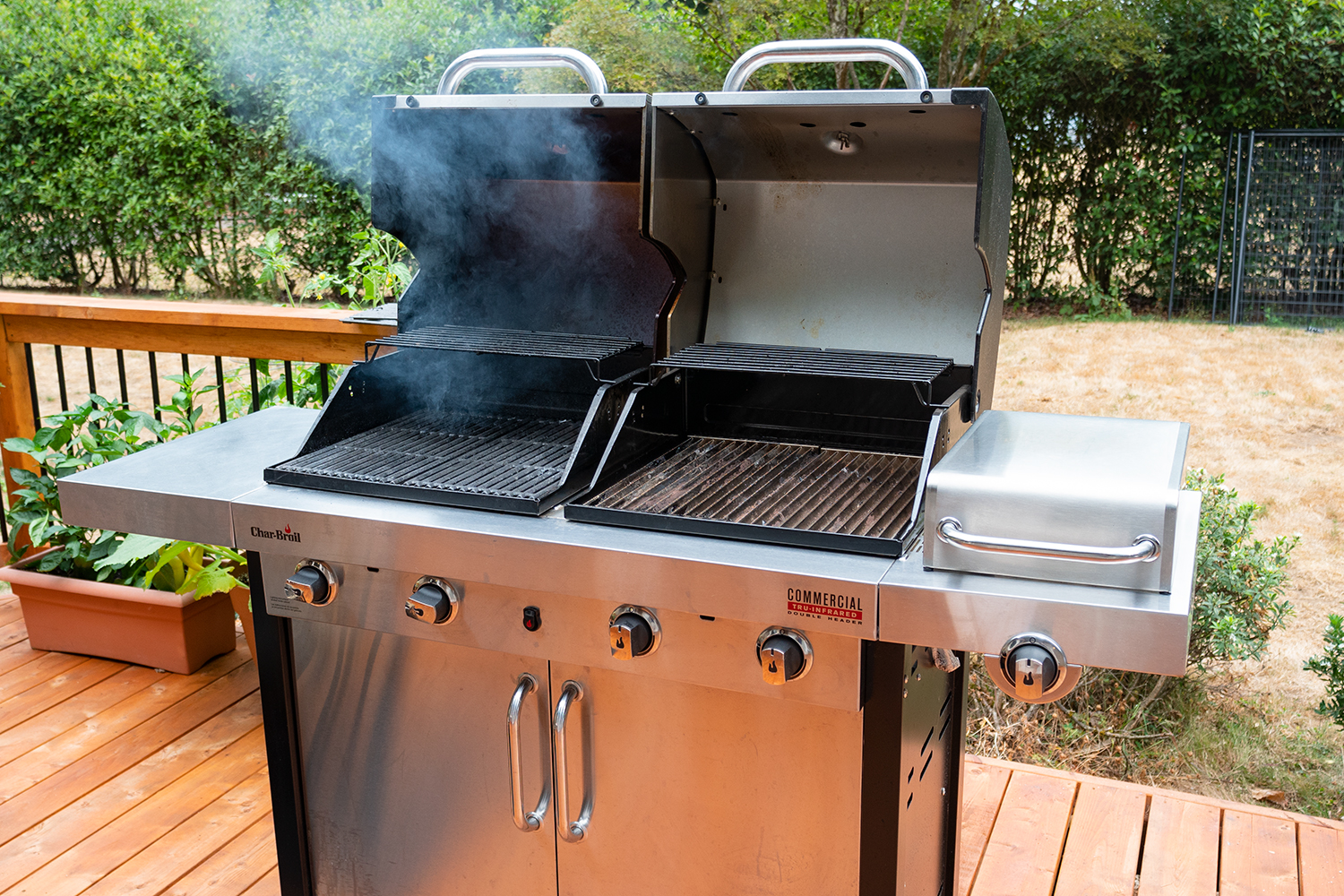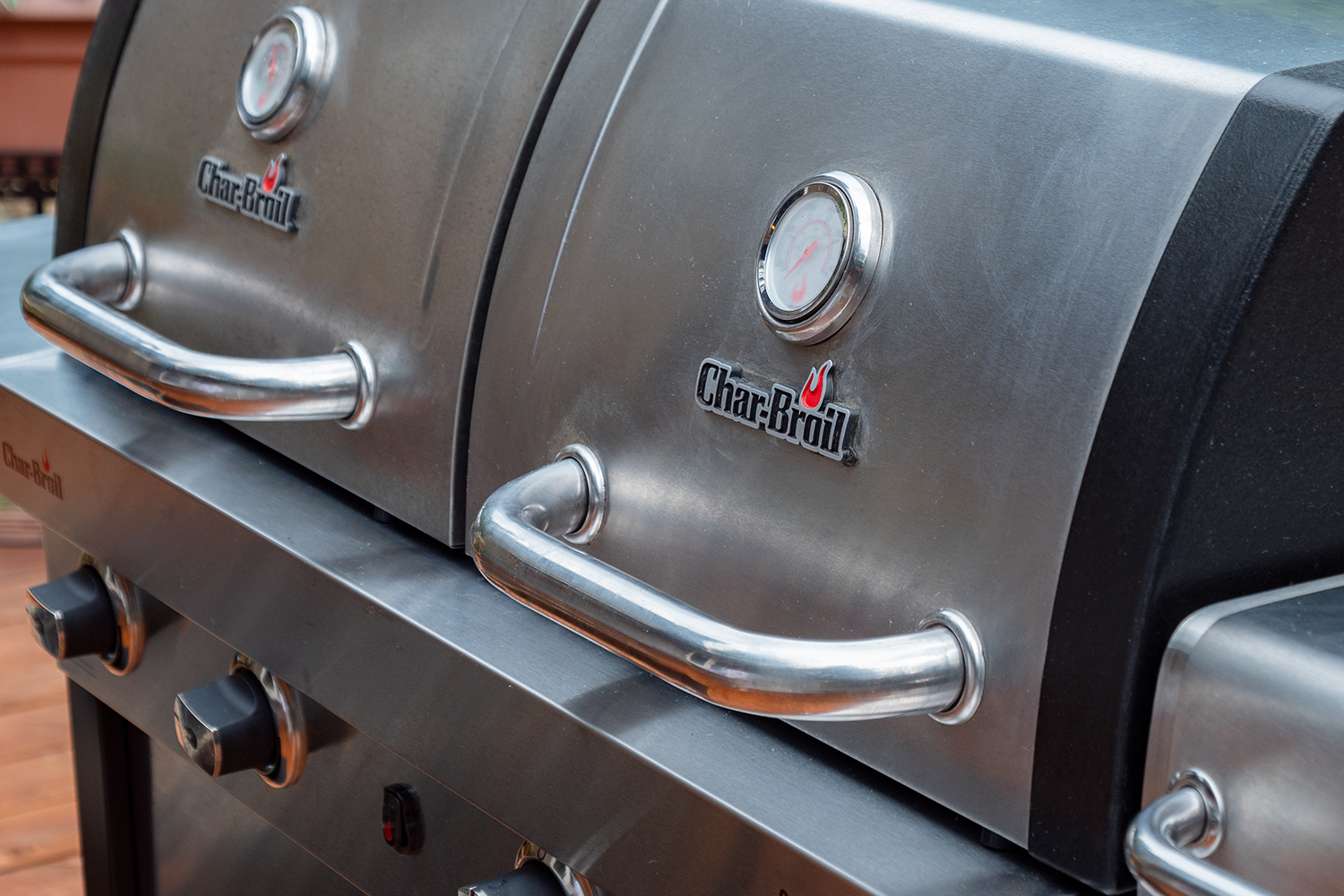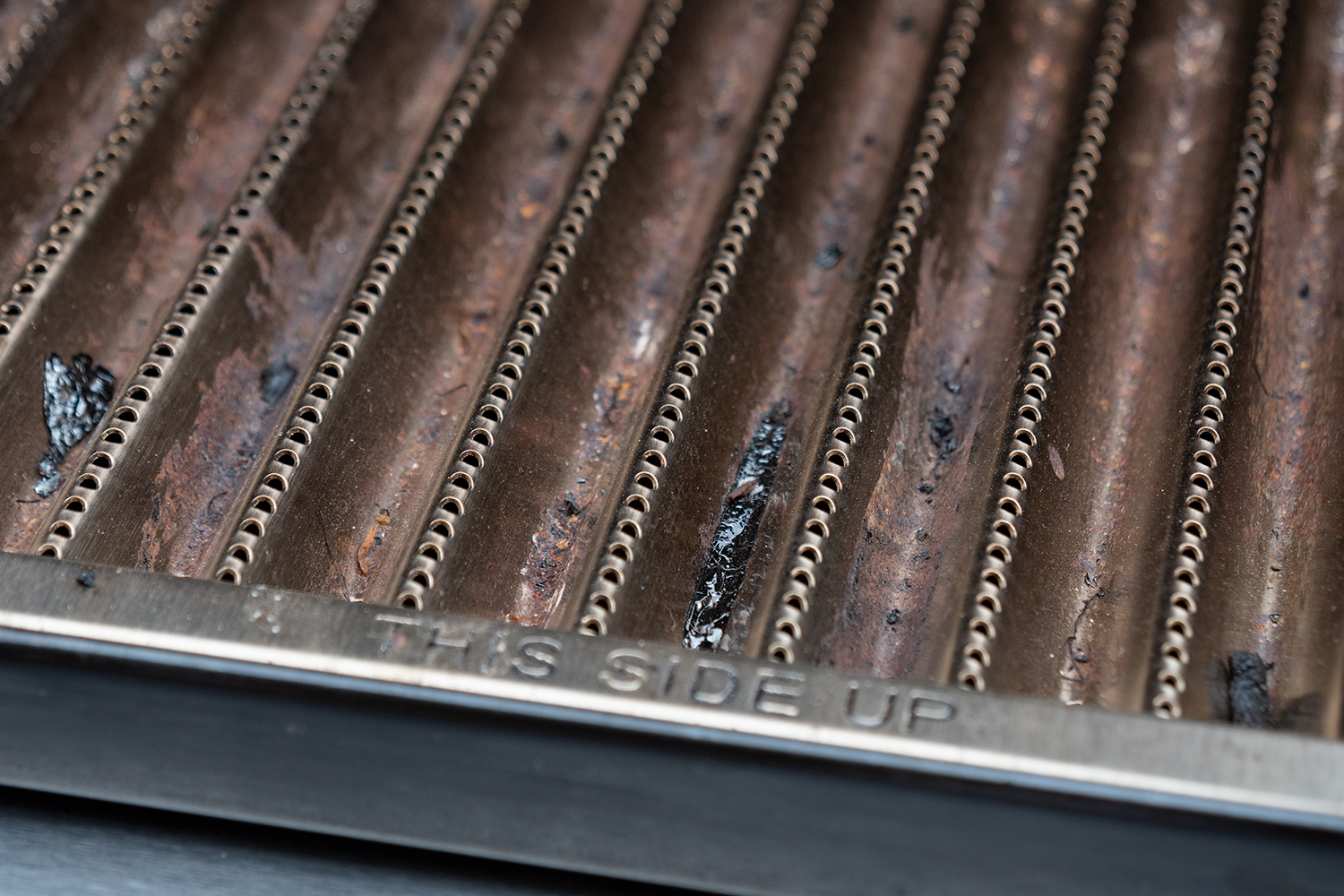Turns out smart grills aren’t a smart buy after all. I’ve burned through three of them at this point and my experience has taught me that while paying a premium for a quality grill is a wise move, owning a smart grill is usually more hassle than it’s worth.
My first smart grill experience was with the Rolls-Royce of the genre, the Lynx Smart Grill. Based on Lynx’s already ultra-premium grill products, this thing had fancy lights, voice-control, automated heat control, verbal recipe instructions, digital temperature probes — the whole nine. You can well imagine why I fell in love with the stainless-steel beast. It was an outstanding grill first, and a technological marvel a close second. But my honeymoon with this appliance was rocky. The command center for the Lynx Smart Grill was essentially a PC built into the base, and as PCs are prone to doing, it would crash. At one point, the entire thing needed to be swapped out to restore functionality.
That’s the real problem with smart devices of any kind, be it a coffee maker, microwave, lawn mower, or, yes, grill: When the smart parts fart, the device is often rendered useless. I don’t want to have to call an IT professional because I can’t nuke a frozen burrito. I definitely don’t want to have to swap out Wi-Fi antennas when I just want to grill a steak. Yet that’s exactly what happened when I set out to cook one evening earlier this year.

Char-Broil had sent me its SmartChef Tru Infrared Grill for review, and initially, it was smooth sailing. The grill itself was outstanding for multiple reasons, but the smart part didn’t add a lot to the experience when it was working, and it bricked the grill when it wasn’t. Char-Broil’s excellent customer service team sent out replacement parts, but in the end, we decided to cut our losses. Char-Broil has decided to pull back on the SmartChef Tru Infrared Grill. When we reached out to the company to find out why, we were told it wanted to focus on getting the word out about its conventional grills featuring the Tru Infrared technology.
The premium tacked onto a decent smart grill would be better spent on getting an excellent standard grill.
I think that was a smart call. Char-Broil’s reputation as a great grill-maker was on the line and the problematic part wasn’t something the company made itself — the smarts were created by an entirely different company and are found in many other products.
As a consolation, Char-Broil offered to send me its Commercial Tru Infrared Double Header grill. The fact that there was no digital tech inside this grill was the primary reason I wanted to test it. My theory was that the premium tacked onto a decent smart grill would be better spent on getting an excellent standard grill. Turns out, my theory was spot-on.
Built like a tank
In the home theater world, a piece of audio gear is often pre-judged by its weight; this stems from a time before digital amps when a hefty power supply was an indicator of quality, but it still rings true today. I find this weight-equals-quality indicator holds up well in the world of grills, too, and by that measure, the Double Header should fare well. It is an absolute beast of a grill.
The grill’s immense mass comes from the use of high-quality components in nearly every nook and cranny. Thick sheets of stainless steel and cast iron combine to form a formidable grill that requires at least two people to move it — three is better. You can even feel the weight in the dual grill hoods as you lift and lower them, which instills some confidence in the Double Header’s ability to keep heat locked inside its chambers and maintain specific temperature with a high degree of accuracy.
My location in the Pacific Northwest is basically a rust sentence for most grills, but thanks to stainless steel construction and religious use of a Char-Broil grill cover, I haven’t seen so much of a speck of rust appear. I anticipate this grill will make it well past the two-year mark without starting to fall apart.
Tru Infrared, technically true
Those familiar with grill tech are probably used to seeing ceramic or glass plates above burners to create an infrared heat source. Char-Broil’s approach uses metal plates with tiny perforations that align perfectly with the grill grates. It’s not an approach we’d seen before, but as we’ll discuss shortly, it works very very well.
The idea behind infrared heating in a grill is that the heat is evenly distributed across the entire cooking surface area and that temperatures remain stable with no possibility of flare-ups. One might think this would reduce the opportunity for char or reduce that smoke-kissed flavor, but we had no such problems with Char-Broil’s Tru Infrared system.

One thing to be aware of is that the channels in the infrared plates become a gathering place for rendered fats. It is wise to use the included scraper tool to help keep those channels clean, otherwise you’ll be dealing with a bunch of thick smoke during preheating, and it will take a long time to burn off. Speaking of time and preheating: Infrared grills take longer to come to temperature in general, but we found the steel plates in the Double Header heated up faster than ceramic alternatives we’ve tested.
Features and accessories
Let me start out by pointing out there’s an accessory I say is included with the grill during my video above that isn’t actually included. Turns out, the grate lifter tool was included with a different Char-Broil review sample and I was confused. The tool is available at Char-Broil’s website, though, and I highly recommend purchasing it. While there, get a cover and any cooking utensils you think you might need.
While built-in grill thermometers are often suspect, I’ve found the two mounted into each hood on the Double Header work pretty well. It’s wise to use a digital thermometer probe if you need to check the internal temperature of any food anyway, so unless you’re going for a perfect 220 degrees for slow-smoking BBQ, the included thermometers will get you by just fine. I also appreciate the inclusion of a propane meter, which gives at least some forewarning that you might be soon running out of fuel. I’m shocked that this isn’t a standard feature on every grill.
For lighting the burners, the Double Header comes with a battery-powered, push-button ignition system that is rock-solid reliable.
But how does it cook?
Char-Broil tells me that the Commercial Tru Infrared Double Header is a $700 grill that cooks like a $1,400 grill. That’s a bold claim, and one I can confidently back up. The Double Header is easily three times better than any $300 to $400 grill I’ve ever bought or tested, and it is worth every penny.
My measure of a grill’s quality comes down to its ability to deliver varying degrees of heat intensity and heat consistency across its cooking surface. I want for the grill to get scorching hot when called to do so, and no matter what heat intensity I choose, I want for it to be exactly the same upfront as in the back, and from left to right. Testing for this is remarkably easy — and for us, turned out to be especially delicious, for months on end.
All of our food came out perfectly.
I can tell you all about how great the Double Header is, but seeing is believing, so, for our product review video, I grabbed some squash, chicken breast, and ribeye steaks, all of uniform thickness. I then cranked up the far left side of the left chamber to absolute maximum. The right chamber, which I have reserved for grilling vegetables, was set to a medium-high heat. I then tossed everything on the grill in specific locations with the aim of using every square inch of the grill as I cooked both sides of all food items.
We looked for deep, consistent grill marks on both sides of the food, dark caramelization on the steak, a thin crust on the chicken breast’s exterior, and uniform marks on the squash. In just minutes, I had exactly that.
The Double Header is a consistently even and, when called to be, intense cooking tool. All of our food came out perfectly, and that’s because we knew exactly what to expect from the grill when we walked up to it. The steak had a marvelous crust and was a perfect medium rare inside; the chicken had a thin, slightly charred exterior, was cooked through, and remained juicy and tender; and the squash had the perfect amount of snap and hints of smoke. The confidence boost that heat consistency and intensity gives you is invaluable. Nobody likes pink chicken or dry-as-a-bone steak, and with this grill, I never have to worry about winding up with that result.
Should I buy it?
My theory that money is better spent on a high-performance grill rather than tech you don’t need was easily proven by my cooking experience with the Double Header. There are certainly other fine grills on the market, but I’ve found that most of them can’t offer the same kind of premium cooking experience at this price. There’s great value in the Double Header from a financial perspective, sure, but the value in having a reliable, consistent cooking tool is priceless.
